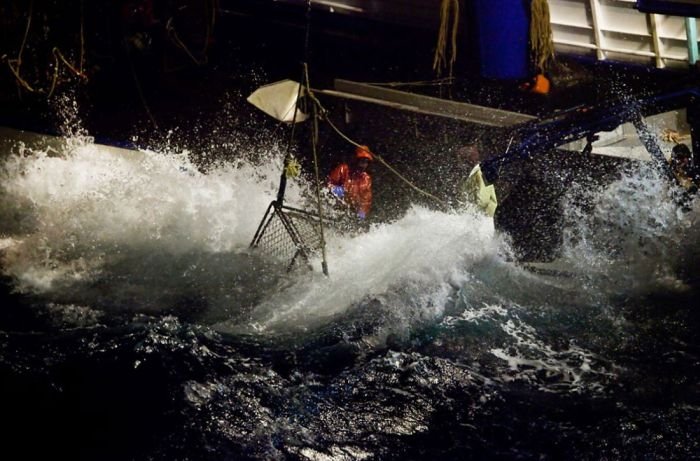|
|
Deadliest Catch, Discovery Channel
|
Commercial fishing has long been considered one of the most dangerous jobs in America. In 2006, the Bureau of Labor Statistics ranked commercial fishing as the job occupation with the highest fatality rate with 141.7 per 100,000, almost 75% higher than the fatality rate of pilots, flight engineers, and loggers, the next most hazardous occupations. However, Alaskan king crab fishing is considered even more dangerous than the average commercial fishing job, due to the conditions of the Bering Sea during the seasons they fish for crab. According to the pilot episode, the death rate during the main crab seasons averages out to nearly one fisherman per week, while the injury rate for crews on most crab boats in the fleet is nearly 100% due to the severe weather conditions (frigid gales, rogue waves, ice formations on and around the boat) and the danger of working with such heavy machinery on a constantly rolling boat deck. Alaskan king crab fishing reported over 300 fatalities per 100,000 as of 2005, with over 80% of those deaths caused by drowning or hypothermia.
Rationalization: derby vs. quota
The series' first season was shot during the final year of the derby style king crab fishery. The subsequent seasons have been set after the change to a quota system as part of a process known as "rationalization". Under the old derby style, a large number of crews competed with each other to catch crab during a restrictive time window. Under the new Individual Fishing Quota (IFQ) system, established owners, such as those shown on the series, have been given quotas which they can fill at a more relaxed pace. In theory, it is intended to be safer, which was the main rationale for the change in the fishing rules. The transition to the quota system was also expected to increase the value of crab, by limiting the market of available crab. An influx of foreign crab negated some of these gains during the 2006 season. The rationalization process put many crews out of work as the owners of many small boats found their assigned quotas too small to meet operating expenses; during the first season run under the IFQ system, the fleet shrank from over 250 boats to around 89 mostly larger boats with high quotas.
|
|









